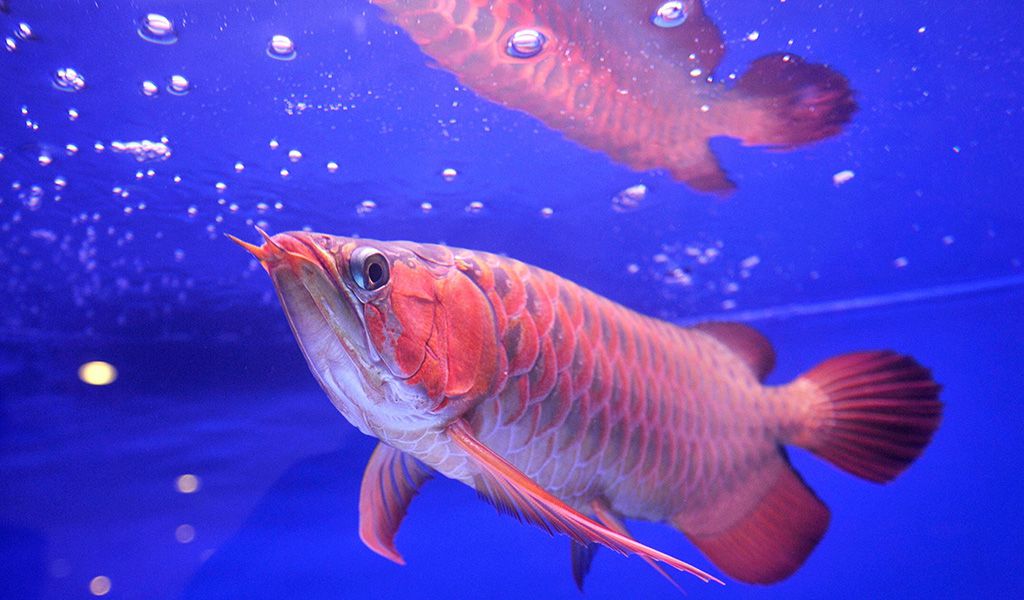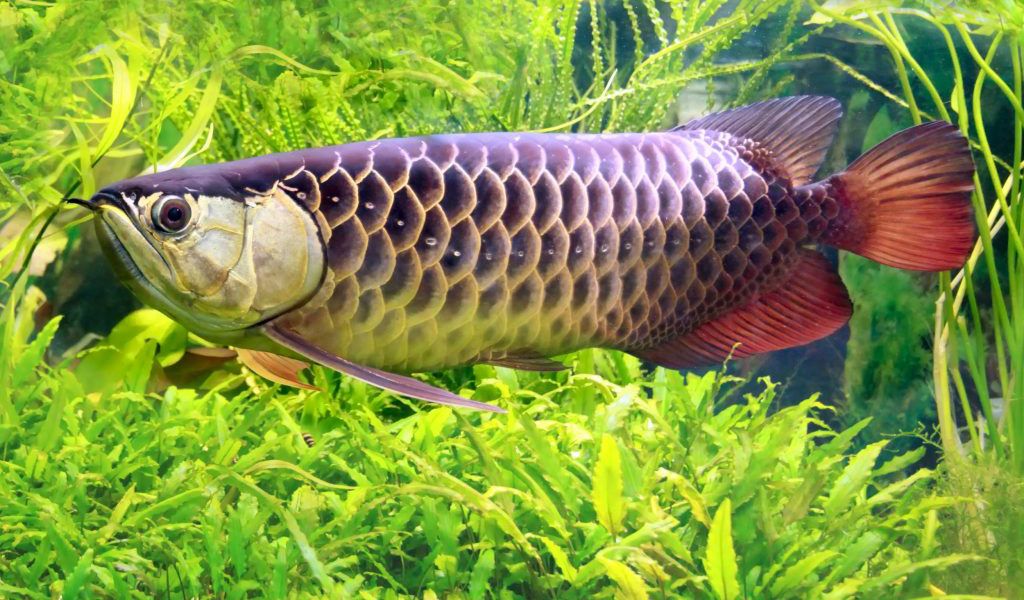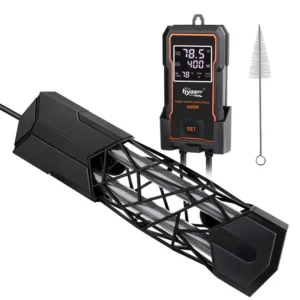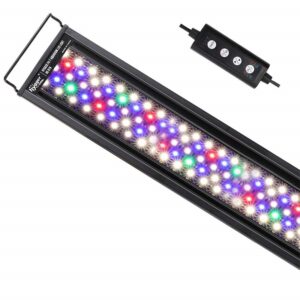Arowanas are freshwater bony fish, coming from the Osteoglossidae family. In the wild, they prefer slow-moving, warm, and acidic waters. Generally, they can live up to 10–15 years. However, they can even live up to 20 years in ideal conditions. Next in this article, let’s learn about how to take care of arowana fish.
Content Table
Are Arowanas Dangerous
Arowanas are aggressive to other fish, especially fish smaller than themselves. Consequently, the ideal tank mate for Arowanas should be fish that are aggressive or large. For example, clown knifefish, pacu oscars, siamese tigerfish, and green terrors. On the other side, are Arowanas dangerous for humans? Arowanas may bite your fingers when you feed them or clean the aquarium. Because Arowana fish may mistake your fingers for food.
By the way, what can you do in the face of aggressive Arowanas? Arowanas may become aggressive because of stress. As a result, you should check the water conditions regularly. Besides that, food deficiency also causes aggressive Arowanas. Thus, providing adequate food is essential. In addition, some Arowanas are born with an aggressive temperament. In this case, it is best to keep them alone.
How Big Do Arowanas Get
Arowanas are not easy to keep and need wide living spaces. In general, adult Arowanas can grow up to 2–3 feet, and some even reach 4 feet. For instance, Silver Arowanas can grow up to 3 feet. Also, you should provide food rich in protein. Otherwise, they may grow slowly because of nutrient deficiency. Moreover, they are mouthbrooders. Commonly, fish fries get mature when they are 3–4 years old.

Arowana Fish Care Guide
Keeping healthy Arowana fish in a fish tank needs your attention and maintenance skills, thus, the fish is not an excellent choice for beginners. In this segment, we will share with you guys how to take good care of Arowana fish.
Basic requirements overview
- Minimum arowana fish tank size: 250 gallon
- Average adult size: 2–3 feet
- Ideal water temperature: 75-86℉
- pH level: 6.0-7.0
- Water hardness level: 1-8 dKH
- Ammonia level: 0 ppm
- Nitrite level: 0 ppm
- Nitrate level: less than 40 ppm
Tank set up
As we have mentioned above, Arowanas need an adequate living room. Hence, you’d better keep the young Arowana fish in a 60-gallon fish tank, while the minimum tank size for adult ones should be 250 gallons at least. To prevent Arowana fish from jumping out of your tank. It is better to add an aquarium lid.
Besides that, it is feasible not to add substrate to an Arowana aquarium. Because they are middle and upper dwellers. Adding the substrate causes the accumulation of uneaten food, debris, or waste, which is damaging to water quality and fish health. Nonetheless, you should choose the substrate according to the aquatic plants’ needs. The aquatic plants for the Arowana aquarium should be firmly rooted or hard to reach, such as African water fern, Java fern, Java moss, and Amazon swords. In addition, you can also add some aquarium decorations to provide hiding places, like stones, rocks, and wood. Nevertheless, never place any sharp objects in your Arowana aquarium. Otherwise, it would be a risk of Arowana injury.
Keep great water conditions
- Water temperature
Too high a water temp would lower the fish’s lifespan, while too low a water temp may be fatal for Arowanas. As a result, you should keep the water temperature within the ideal range of 75-86℉. Adding an aquarium heater is advisable, which can heat the water automatically. Also, a heater with a built-in thermometer should be the best alternative. Because you can check the real-time water temperature. And it is good for your Arowana’s health.
- Water changes
Seeing that Arowanas produce a lot of waste, which may increase the levels of ammonia, nitrite, and nitrate, and finally cause bad water quality. Consequently, it is recommended to change 20-30 percent of aquarium water once a week. In this case, using an electric vacuum will help you a lot, especially in a large tank, doing water changes should be arduous. However, using the electric cleaner will make the water change and aquarium cleaning effortless and convenient. While doing water changes, you’d better monitor the water parameters, like pH level.

Build a great filtration system
Arowanas would produce a lot of waste or feces, which poses a threat to great water quality. Hence, building a great filtration system is critically crucial, which helps to remove waste, debris, and other unnecessary substances from your tank. It is beneficial to keep great water quality. Adding canister filters is an excellent alternative.
Keep ideal oxygen level
Aeration is vital for a fish tank. It makes sense to improve the dissolved oxygen level, which is good for fish health. Also, aeration circulates the water in your tank, which improves the water quality. An AC air pump is a great option, which provides robust, reliable airflow to keep high oxygen levels for aquariums.
Diet
Arowanas are carnivores. Nevertheless, you can feed them almost anything. But since Arowanas are large and growing fast, hence they require high-protein food. Also, you should make sure a balanced diet. For the young Arowanas, live or frozen brine shrimp, black worms, small insects, and small fish are great options. On the other hand, you can feed the adult Arowanas worms, shrimps, small fish, insects, frogs, or others. Usually, it is better to feed the young Arowanas 2–3 times each day, and feed adult ones once per day, or even once every second day.
Reminder
In a nutshell, keeping Arowanas in a fish tank can be challenging. Generally, you’d better not hold more than one adult Arowana in a fish tank. OK, it is time to say goodbye. Wish you a good Arowana journey. Finally, thanks for your reading.


I want by this fish
Hi sonle,
You can find them on the local fish store.